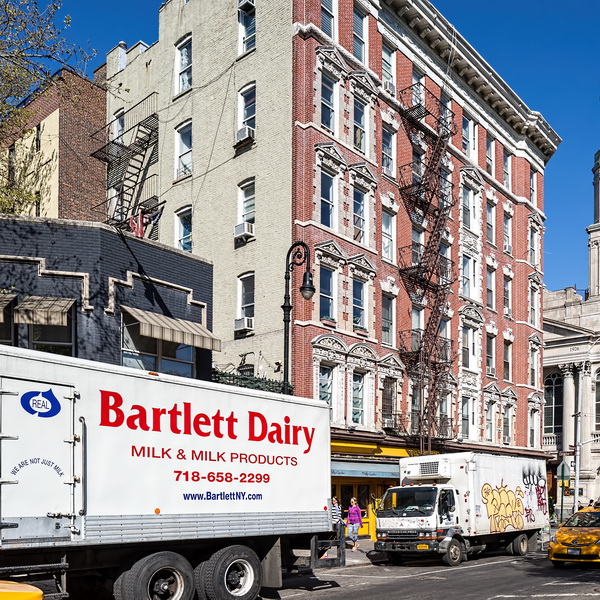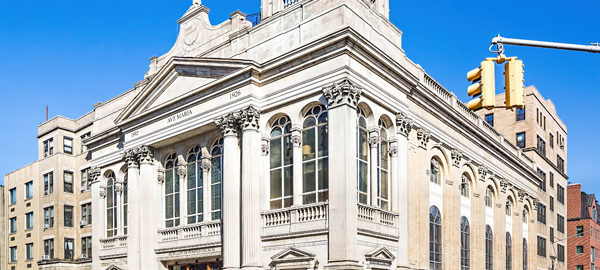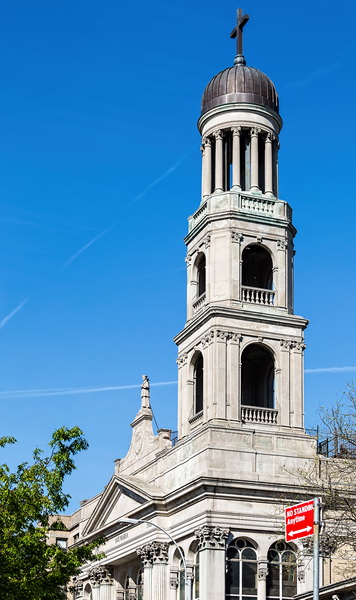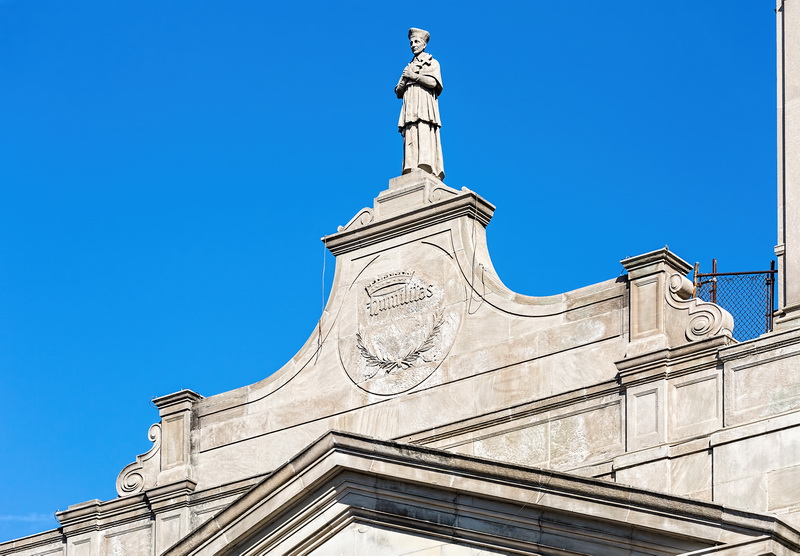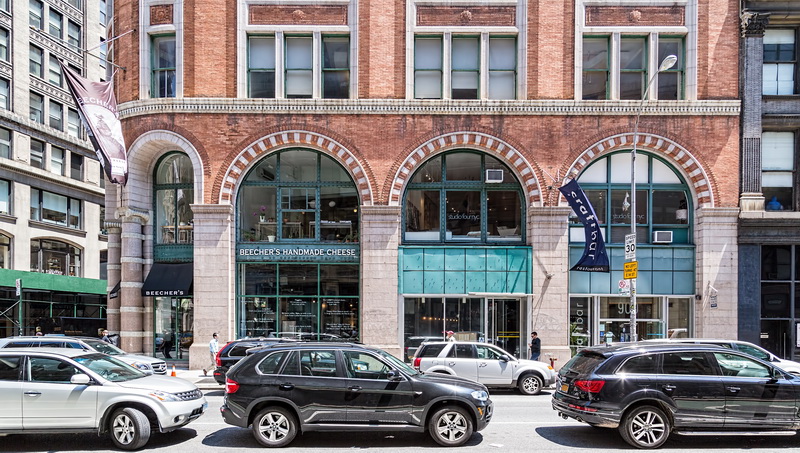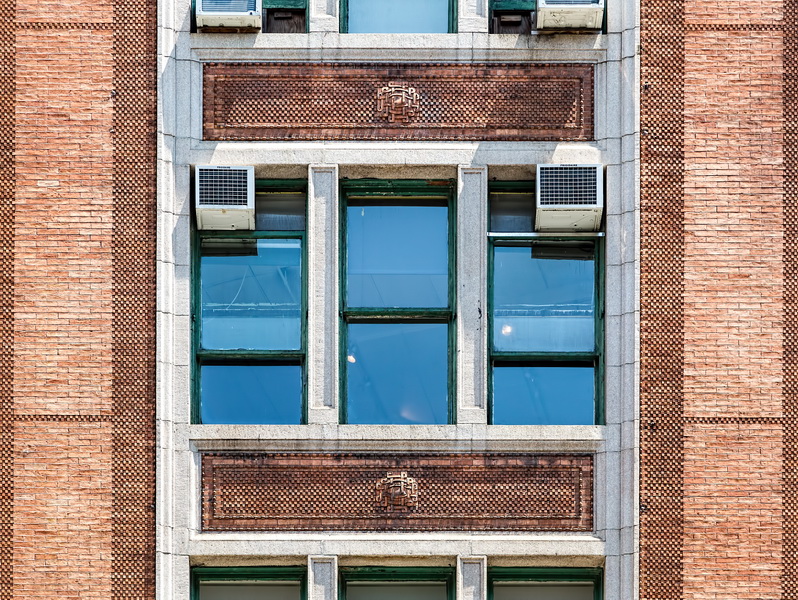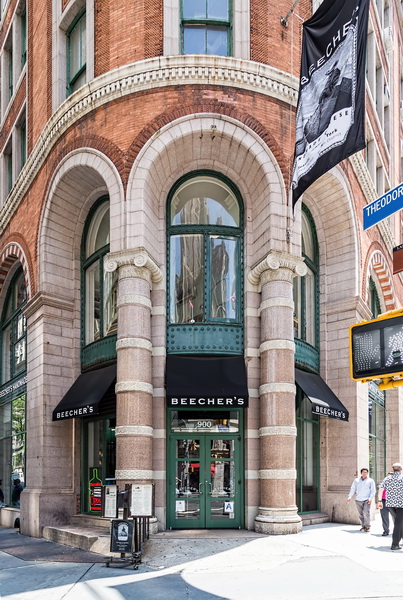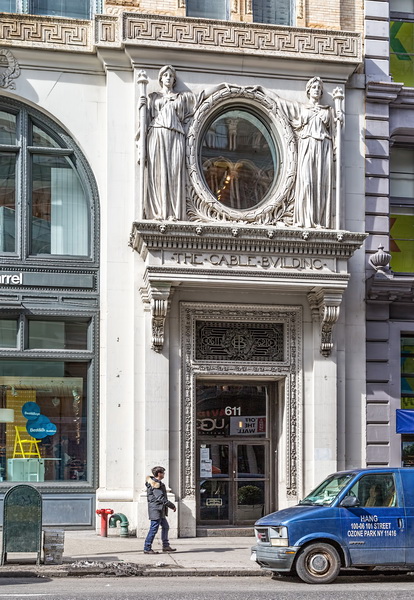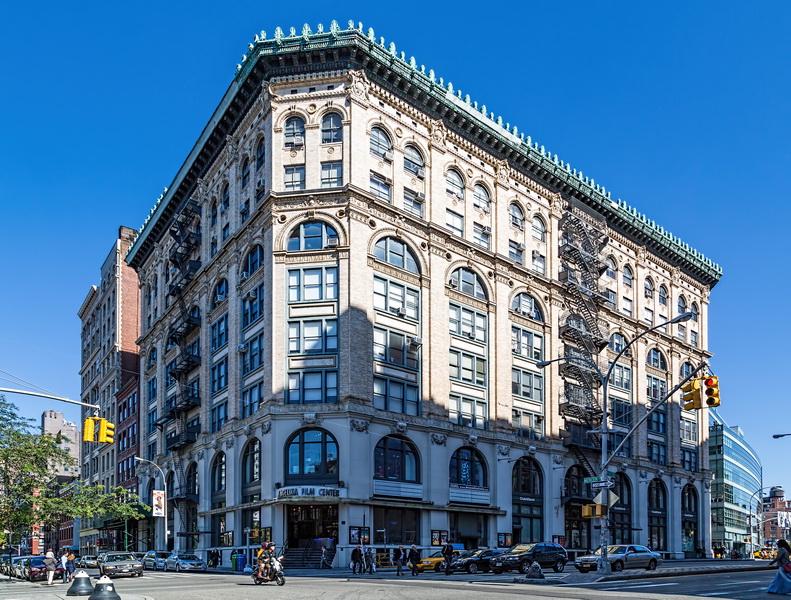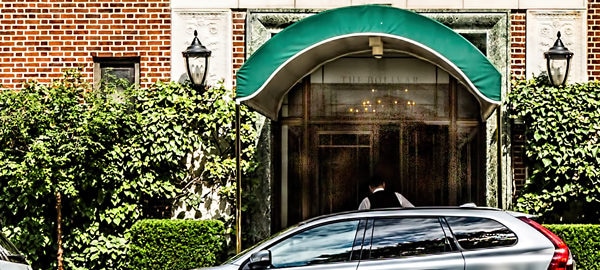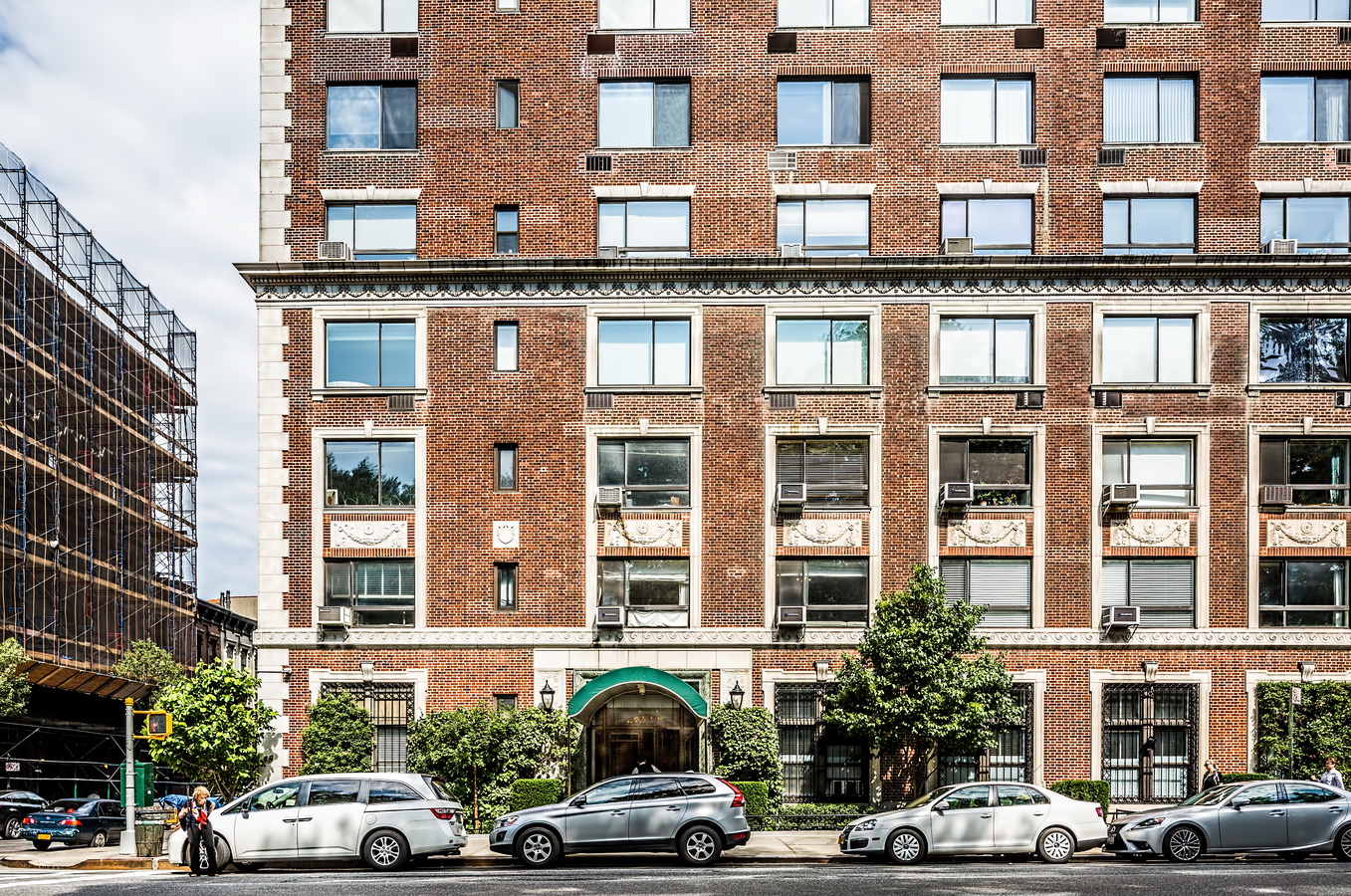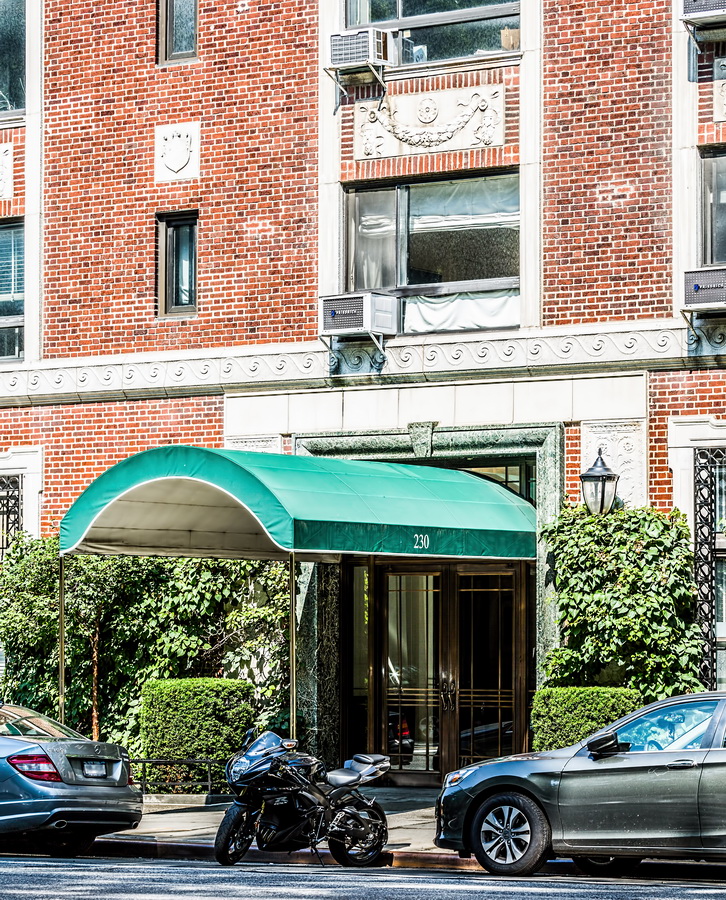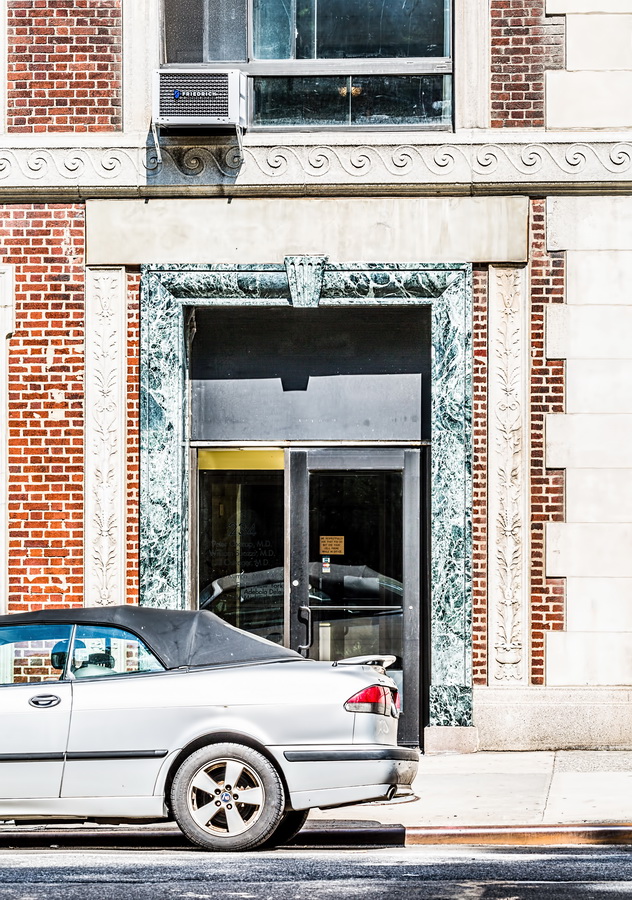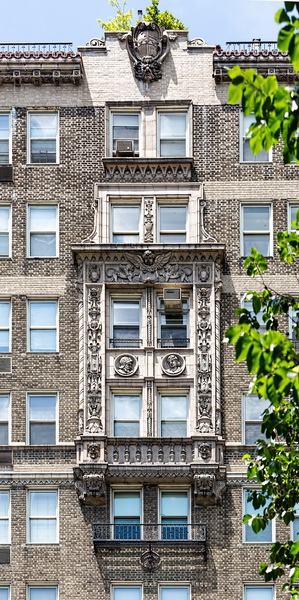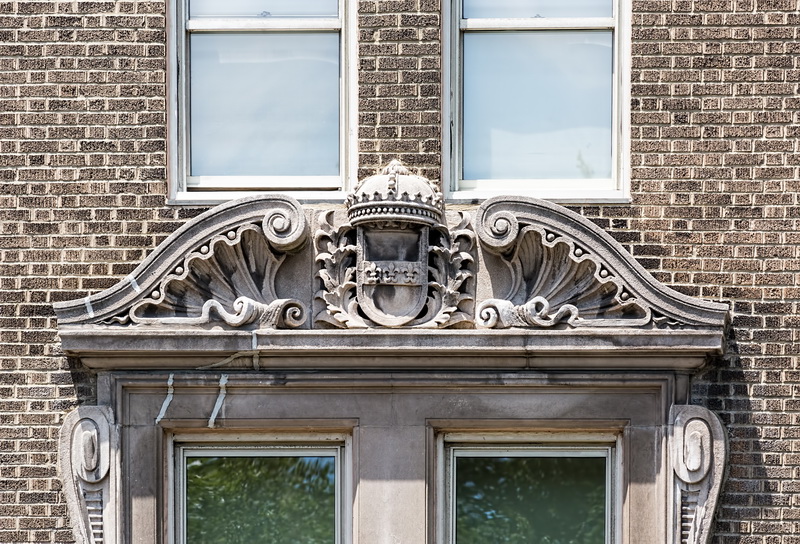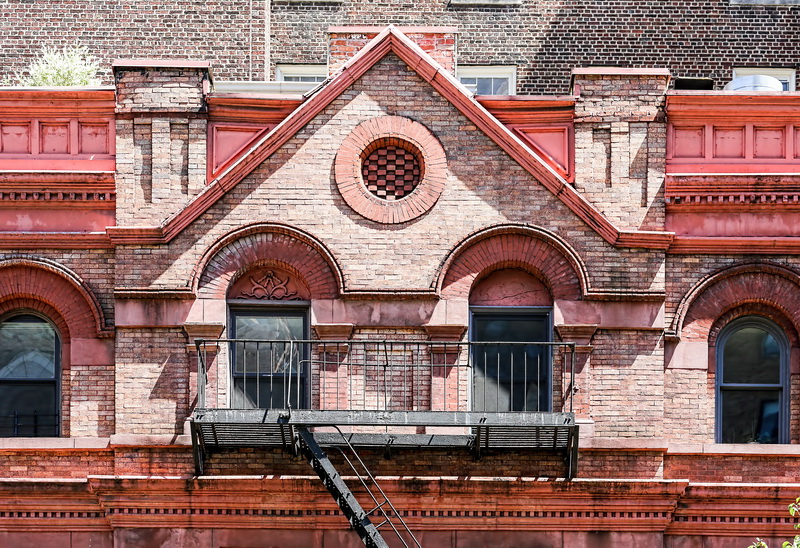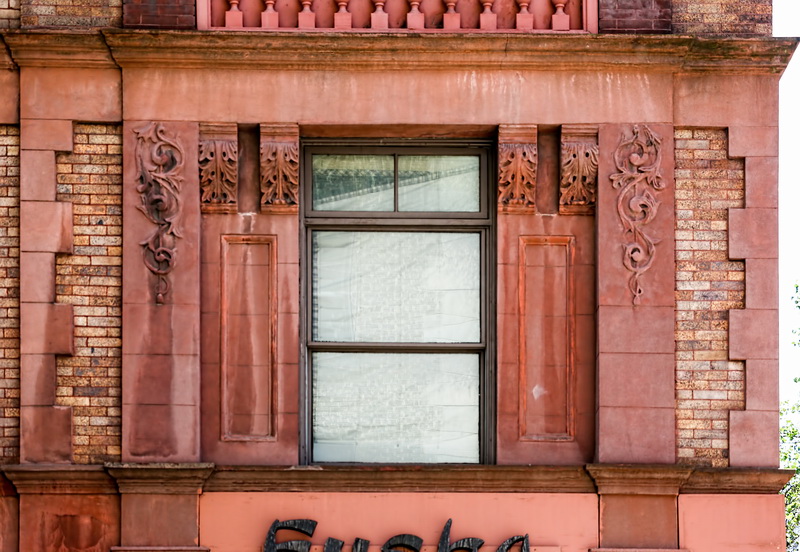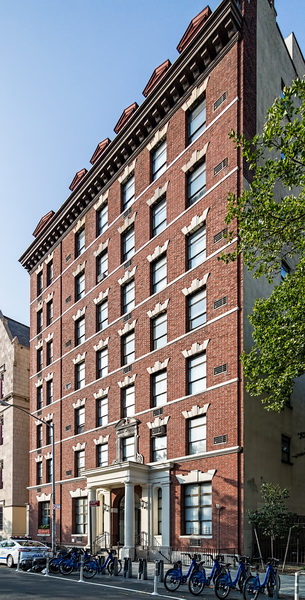228 Bleecker Street is a nicely maintained example of the larger apartment buildings that replaced small dwellings in the early 1900s. Greenwich Village at that time was growing, with an influx of Italian immigrants.
The building is across the street from Our Lady of Pompeii RC Church (built 27 years later).
The tiny residential entry is on Bleecker Street, sandwiched between the building’s gustatory tenants: Trattoria Spaghetto, on the right, Molly’s Cupcakes on the left. Buon appetito!
228 Bleecker Street Vital Statistics
- Location: 228 Bleecker Street
- Year completed: 1901
- Architect: Michael Bernstein
- Floors: 6
- Style: Renaissance Revival
- New York City Landmark: 2010 (Greenwich Village Historic District Extension II)
228 Bleecker Street Recommended Reading
- NYC Landmarks Preservation Commission designation report
- Jeremiah’s Vanishing New York blog
- Emporis database



